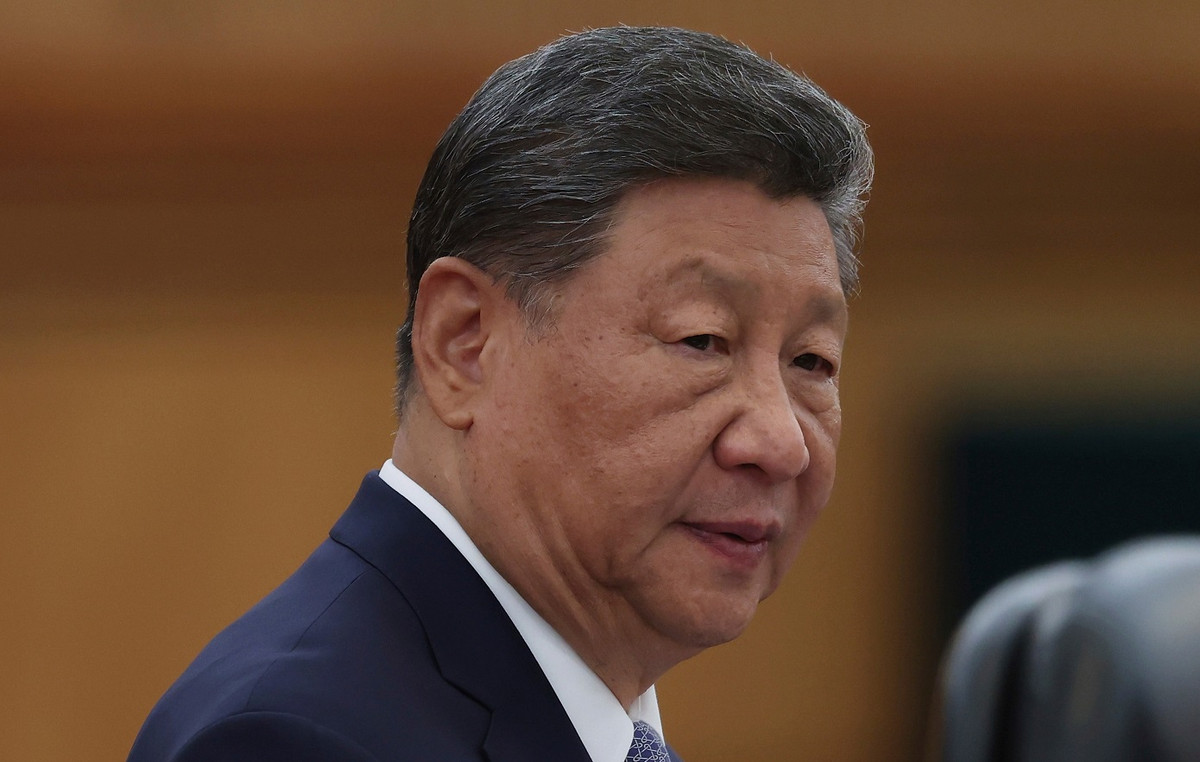- Gold price tests the $2,300 zone as the USD extends its correction.
- The weakness of the US services PMI raised concerns about the economic outlook.
- US yields rise as Fed rate cut expectations for June fade.
The price of Gold (XAU/USD) retreats slightly after reaching another new all-time high above $2,300 in the last European session on Thursday. The precious metal has benefited from the weakness of the US dollar, which has fallen after the US Institute for Supply Management (ISM) published a weak services PMI for March.
The US Dollar Index (DXY), which tracks the greenback against six major currencies, extends its bearish trend to 104.00.
US 10-year Treasury yields rise slightly to 4.36% as market expectations that the Federal Reserve (Fed) will begin to ease its higher interest rate policy at its June meeting have faded. softened. CME's FedWatch tool shows that traders are pricing in a 58% chance that the Fed will cut interest rates in June, up from 70% a week ago. Non-yielding assets, such as Gold, tend to suffer liquidity outflows when demand for interest-bearing assets, such as US bonds, increases. However, this has not been the case recently for Gold, which has been rising for several sessions, even though yields have also remained higher.
Meanwhile, investors await the release of the US Nonfarm Payrolls (NFP) for March, which will be released on Friday. The US NFP report is expected to show that US employers added 200,000 new payrolls during the month, down from the previous reading of 275,000. The unemployment rate will remain at 3.9%. Average hourly earnings, which measure wage growth and provide significant guidance on inflation prospects, are expected to rise at a slower pace of 4.1% from 4.3% in February on a year-over-year basis.
Strong wage growth and labor demand could further reduce Fed rate cut expectations for June, while easing labor market conditions could boost rate cut hopes. This latter scenario would likely have a negative impact on US yields and would likely help Gold rise further.
Late in the European session, the US Department of Labor released weekly jobless claims data for the week ending March 29. The number of people filing for unemployment benefits for the first time was 221,000, above expectations of 214,000 and the previous reading of 212,000, revised up from 210,000.
Daily Market Summary: Gold Price Maintains Gains Despite Bullish US Bond Yields
- The price of Gold exceeds the round figure of $2,300, supported by the weakness of the US Dollar. The US dollar is facing an intense sell-off as poor US ISM services PMI results for March deepened uncertainty over the outlook for interest rates.
- Those responsible for monetary policy at the Fed have reiterated that there is no urgency to cut rates, since they are not confident that inflation will return to the desired rate of 2%. The strength of the US economic outlook and the tightness of the labor market keep inflationary pressures high. However, the weakness of the US services PMI has cast some doubt on the resilience of the US economy.
- The services PMI surprisingly fell to 51.4 points in March, below expectations of 52.7 and below the previous reading of 52.6 points. Subindices such as new orders and prices paid also fell sharply. The services PMI measures activity in the services sector, which represents two-thirds of the U.S. economy. The sharp decline in prices paid indicates a easing of price pressure, while the decline in the new orders index suggests a slowdown in demand.
- Market expectations that the Fed will pivot toward rate cuts at the June meeting have eased after Atlanta Fed President Raphael Bostic offered hawkish guidance and Fed Chairman Jerome Powell will reiterate the need for more data before pivoting towards rate cuts.
- On Wednesday, Raphael Bostic said on CNBC that he sees the central bank cutting interest rates only once in the final quarter of this year. Bostic expects inflation to return to the 2% target in 2026. He added: “The economy maintains the strong momentum it has had.”
- Jerome Powell maintained the baseline that rate cuts will begin later this year only when policymakers have greater confidence that inflation is moving downward sustainably. “Recent readings for both job gains and inflation have been higher than expected,” he said.
Technical analysis: Gold price tests $2,300

The price of Gold is constantly refreshing its lifetime highs supported by multiple favorable winds. The precious metal tests the round figure of $2,300. However, it struggles to continue its winning streak for the seventh trading session on Thursday.
Extremely overbought momentum oscillators encourage expectations of a slight correction. The 14-period Relative Strength Index (RSI) is around 80.00.
Short-term demand is strong as the RSI has consistently oscillated in the bullish range of 60.00-80.00 for over a month.
All short-term to long-term exponential moving averages (EMAs) are tilted upwards, which also suggests strong short-term demand. On the downside, the March 21 high at $2,223 is the main support zone.
Frequently asked questions about Gold
Why invest in Gold?
Gold has played a fundamental role in human history, as it has been widely used as a store of value and medium of exchange. Today, aside from its brilliance and use for jewelry, the precious metal is considered a safe-haven asset, meaning it is considered a good investment in turbulent times. Gold is also considered a hedge against inflation and currency depreciation, since it does not depend on any specific issuer or government.
Who buys more Gold?
Central banks are the largest holders of Gold. In their aim to support their currencies in turbulent times, central banks tend to diversify their reserves and purchase Gold to improve the perception of strength of the economy and currency. High Gold reserves can be a source of confidence for the solvency of a country. Central banks added 1,136 tons of gold worth about $70 billion to their reserves in 2022, according to data from the World Gold Council. This is the largest annual purchase since records exist. Central banks in emerging economies such as China, India and Türkiye are rapidly increasing their gold reserves.
What correlation does Gold have with other assets?
Gold has an inverse correlation with the US Dollar and US Treasuries, which are the main reserve and safe haven assets. When the Dollar depreciates, the price of Gold tends to rise, allowing investors and central banks to diversify their assets in turbulent times. Gold is also inversely correlated with risk assets. A rally in the stock market tends to weaken the price of Gold, while sell-offs in riskier markets tend to favor the precious metal.
What does the price of Gold depend on?
The price of Gold can move due to a wide range of factors. Geopolitical instability or fear of a deep recession can cause the price of Gold to rise rapidly due to its status as a safe haven asset. As a non-yielding asset, the price of Gold tends to rise when interest rates fall, while rising money prices tend to weigh down the yellow metal. Still, most of the moves depend on how the US Dollar (USD) performs, as the asset is traded in dollars (XAU/USD). A strong Dollar tends to keep the price of Gold in check, while a weaker Dollar is likely to push up Gold prices.
Source: Fx Street
I am Joshua Winder, a senior-level journalist and editor at World Stock Market. I specialize in covering news related to the stock market and economic trends. With more than 8 years of experience in this field, I have become an expert in financial reporting.







